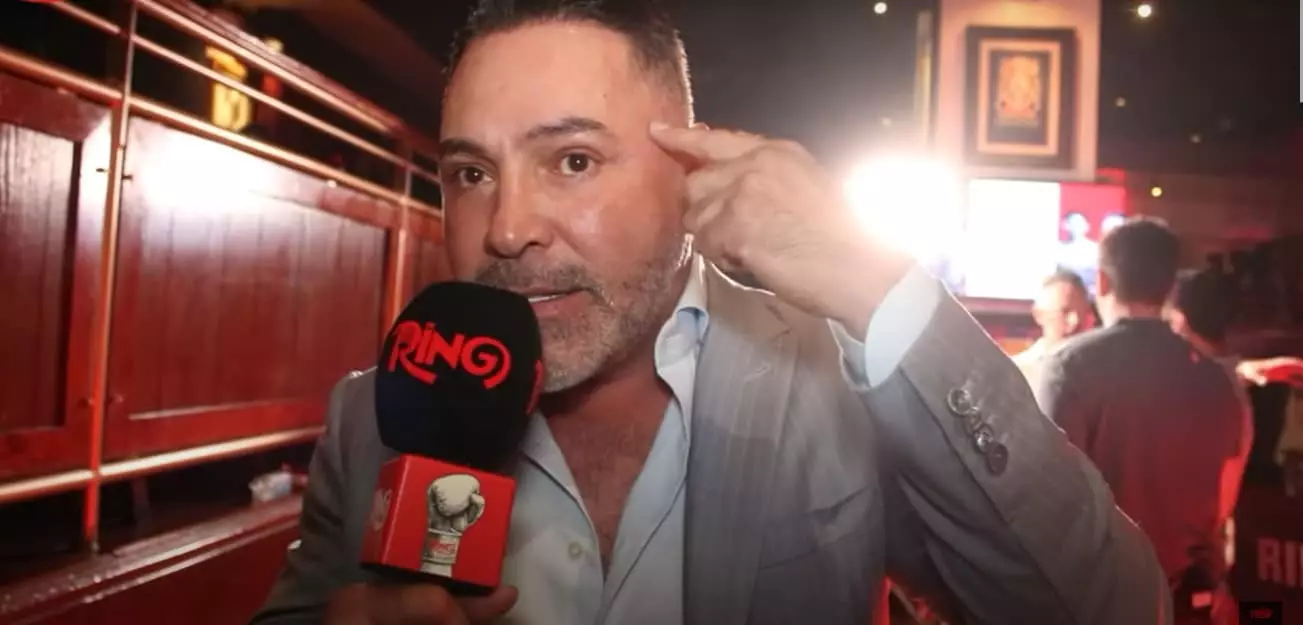In the world of professional boxing, image and mental strength often play as pivotal a role as physical prowess. Promoter Oscar De La Hoya’s recent tactics to unsettle Edgar Berlanga peel back the layers of superficial bravado that fighters often project. His strategy was not merely about psychological warfare but also about exposing perceived vulnerabilities, beyond the ring. De La Hoya’s admission that he intentionally aimed to provoke Berlanga speaks volumes about the importance of mental stability in combat sports. It’s a stark reminder that the mental game can be just as decisive as the physical, and that the façade fighters wear—whether in jewelry, attitude, or claims—can be façades masking uncertainty or insecurity.
By deliberately manufacturing doubt, De La Hoya sought to undermine Berlanga’s confidence before the critical match against Hamzah Sheeraz. Such tactics invite us to consider the ethics of manipulation in sports; however, it also underscores an undeniable truth: mental toughness is a cornerstone of elite performance. In boxing, where a single misstep or emotional lapse can turn the tide, psychological rigidity often determines who walks away victorious. The claim that De La Hoya orchestrated a jewelry inspection to prove Berlanga’s appearance was a sham illustrates how the fight isn’t just confined to punches but includes a battle for psychological dominance long before the bell rings.
The illusion of authenticity: Fake jewelry and fragile egos
De La Hoya’s pointed attack on Berlanga’s jewelry choices extends beyond superficial showmanship. Insisting that Berlanga’s jewelry was counterfeit symbolizes a deeper critique of authenticity—both in appearance and in character. The idea that the gold is fake not only diminishes Berlanga’s perceived wealth or status but also suggests he may be compensating for a lack of genuine substance under the surface. In a sport that often glamourizes bravado, exposing a fighter’s perceived lack of authenticity can be a potent attack, challenging their credibility both publicly and psychologically.
Moreover, De La Hoya contemplating whether Berlanga’s Puerto Rican identity is genuine feeds into a broader narrative about identity and validation in the sport. The fight for respect and recognition in boxing often hinges on such declarations, and De La Hoya’s challenge to Berlanga’s claimed heritage echoes the importance of legitimacy in a sport driven by storytelling and legacy. The insinuation that Berlanga’s persona is a façade is a calculated attempt to erode his standing in the eyes of fans and peers alike. It reveals how, in boxing, image often serves as currency, and questioning authenticity can be as powerful as questioning skill.
Challenging the prospects: Who truly stands to gain?
De La Hoya’s critique extends into a broader evaluation of Berlanga’s career trajectory. His references to Berlanga’s struggles against less formidable opponents and his failure to secure a world title highlight an underlying skepticism about his readiness for top-tier competition. The claim that Berlanga’s recent performances were tepid, and that his push for a payday against Canelo Alvarez was misguided, signals that perhaps Berlanga isn’t yet the fighter he appears to be.
Conversely, De La Hoya champions Hamzah Sheeraz as the more technically sound and mentally prepared opponent. His confidence that Sheeraz could shut Berlanga’s mouth by winning decisively suggests that the real challenge is not just about strength or skill, but also about mental resilience. If Berlanga can’t handle the pressure or adapt to the high stakes, the outcome could strip away the illusions that have kept his star shining thus far.
De La Hoya’s involvement reflects a broader truth in the sport: the perception of a fighter’s potential often surpasses their actual capabilities. Such debates about authenticity, mental stability, and preparedness are intrinsic to boxing’s drama. Whether Berlanga will overcome this mental onslaught remains to be seen, but what’s clear is that the weight of expectation and image-making continues to threaten to overshadow true athletic development.
In the end, boxing isn’t simply about who lands the harder punch; it’s about survival in a psychological battleground that often reveals more about a fighter’s character than their physical conditioning ever could. De La Hoya’s candidness about his strategies exposes how fragile—and how vital—the mental game is, and it challenges us to reconsider what truly defines a champion beyond the flashy costumes or claims of heritage.

